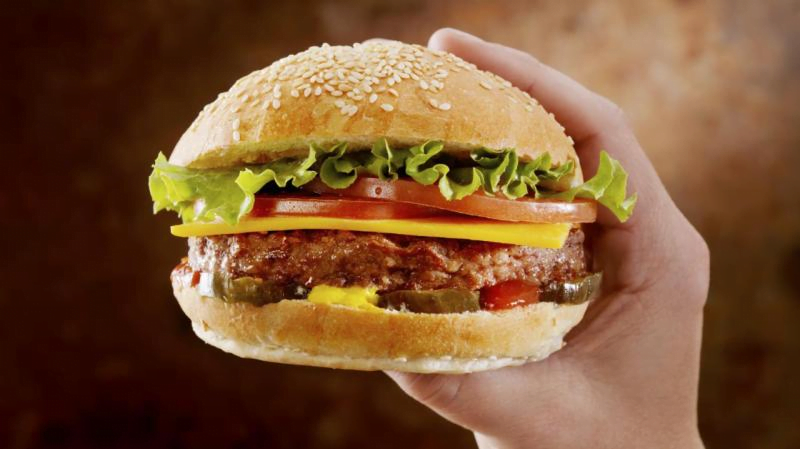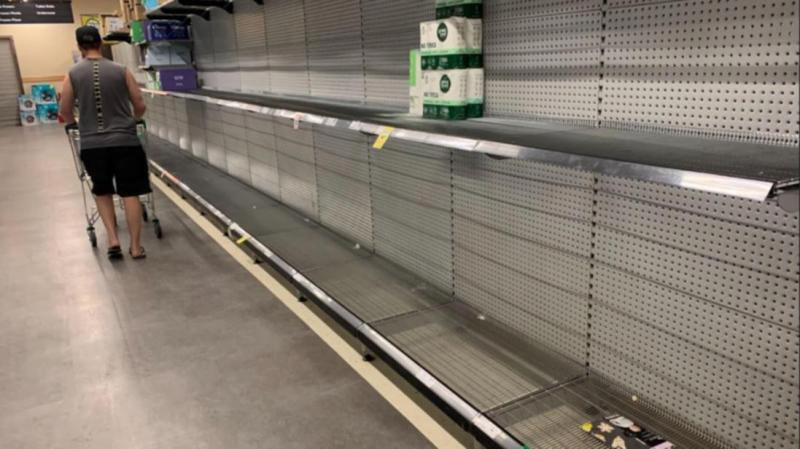Coles boss Steve Cain has made it clear we are closer to the start than the end in terms of inflation on supermarket shelves.
Thank goodness for bananas.
Coles chief executive Steve Cain says the fruit is the supermarket giant’s best-selling product just now, helped by the fact it is a little yellow island of savings in a turbulent sea of inflation.
While bananas are 26 per cent cheaper than this time last year (and avocados are down 29 per cent), Coles saw food inflation in the March quarter hit 3.3 per cent.
Happily for Coles, that’s well under the 5.3 per cent figure for grocery price inflation reported for the March quarter in Wednesday’s official numbers, with Cain suggesting this shows Coles is doing a better job than its rivals at protecting customers from the worst of inflationary pressures spreading across the economy.
But Cain also made it clear that inflation on supermarket shelves is just getting started, with the protracted process of negotiating with suppliers on price rises still at a relatively early stage.
Coles and its suppliers held prices basically flat in the December quarter, but Cain says increases in commodity prices, raw material prices, packaging prices, energy costs and transport costs is leading to an increase in the number of suppliers asking Coles to raise prices.
But these negotiations take time and Coles is still to make decisions on many price requests, meaning the supermarket inflation story has a long way to run.
“You’ve got to bear in mind that we’ve gone from a situation of zero inflation in the last quarter to 3 per cent this quarter, and that number has been sort of steadily increasing during the quarter, because these things take time to agree and filter through,” Cain says.
‘Most disruptive quarter’
He’s forecasting inflation will continue not only into the June quarter but through 2023 as well. Which means the pressure on the RBA to keep raising interest rates will not abate for a while yet.
This inflationary backdrop occurred against what Cain describes as “the most disruptive [quarter] we’ve encountered so far”.
While the shadow of dislocations caused by the war in Ukraine hung over much of the quarter, Coles’ bigger battles were against the rampant omicron wave in January and the floods in South Australia, NSW and Queensland in February.
Cain was forced to eat $65 million of additional COVID-19-related costs in the quarter (compared to just $10 million in the March quarter of 2021) while the floods added another $30 million of costs – and that excludes lost profits from business disruption, which Coles will chase through its insurers.
In this context, Coles’ March quarter was solid. Group retail sales increased 3.9 per cent in the first quarter, with food sales of 4.2 per cent (3.9 per cent on a like-for-like basis) coming in towards the top end of analyst expectations.
Aces up the sleeve
As COVID-19 cases fall and customers shift away from local neighbourhood stores and back towards the mall-based stores where Coles is stronger than Woolworths, Cain should see a little extra sales momentum. And while the market won’t love the elevated costs, it will understand them.
Coles shares were broadly unchanged on Thursday and have traded sideways this year as the market puzzles out the state of the consumer.
The big question for investors now is how Coles responds to the inflation surge. On this point, Cain feels he has a few aces up his sleeve.
First, there’s the push into own brands that he has orchestrated over the past few years.
Cain added 100 new product lines to what he says is the biggest and broadest range of home brands in the country, accounting for about 31 per cent of supermarket sales; if consumers feel the pinch and need to start to trade down, Cain wants to be well-placed to offer them budget alternatives.
The Coles boss emphasises the company is taking a scientific approach to the idea of value, which, he points out, means different things to consumers in the inner city to those in the outer suburbs. Having the right own-brand products to meet these different needs essentially requires a retailer to think like a food manufacturer.
“You have to be very close to the pulse in terms of customer research and what’s going on,” Cain says. “We’re doing more research than ever, we are monitoring social media more than ever, we’re analysing FlyBuys data more than ever.
“It’s just the way of the world – if you’ve got information which you think will help customers and help provide a better offer or service, then that’s a great thing to be able to do.”
A second line of Coles’ response to rising prices is to push through price cuts where it can, increasing the number of 530 product lines on everyday low prices by 31 per cent, or 530 products, during the quarter.
Finally, it will hold the line on prices as much as possible. Cain is clearly sympathetic to suppliers’ pain, but he’s also determined to keep inflation at Coles well below that level seen in the broader grocery sector.
“The job of a good retailer is not just to wave everything through,” he says. “You’ve got to work for your customers.”
Extracted from AFR


